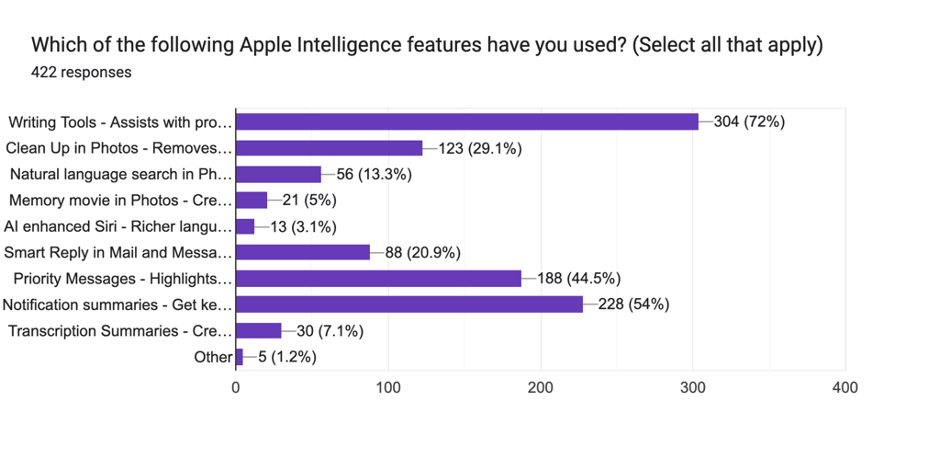
12-20 #Compromise : Google is reportedly testing the MediaTek T900 modem in its Pixel 10 prototypes; Samsung allegedly to introduce the Qi2 wireless charging standard to S25 series; Google has announced Android XR; etc.

Apple is reportedly switching over to a new Bluetooth and Wi-Fi chip that it designed in-house starting in 2025. The combined Bluetooth and Wi-Fi chip will replace components from Broadcom, allowing Apple to reduce its reliance on the company. The chip, referred to as “Proxima” internally, will be introduced in Apple products starting in 2025. It will come to the iPhone 17 models, the Apple TV, and HomePod mini to begin with, and to the iPad and the Mac in 2026. Apple’s Bluetooth and Wi-Fi chip is distinct from the 5G modem chip that Apple is also designing, but eventually, Apple wants to combine these into a single component. Apple will also be able to create thinner devices and new wearable technology with the custom chips that it is creating. (Bloomberg, MacRumors, Yahoo, SCMP)
Intel co-CEO Michelle Johnston Holthaus has claimed that Arm PCs powered by Qualcomm’s Snapdragon chipsets had higher return rates (presumably against Intel-powered PCs). Qualcomm said return rates for PCs powered by its Arm-based Snapdragon X processors are “within industry norm”. Qualcomm “expects 30-50% of laptops to move to non-x86 platforms” in the next 5 years. Qualcomm debuted its Arm-based Snapdragon X processors for the first batch of Copilot+ PCs from Microsoft and other OEMs in Jun 2024.(Android Headlines, Windows Central, CRN)

Huawei CEO, Richard Yu has announced that Huawei has achieved 100% domestic production of chips, which is a testament to the true autonomy of the semiconductor industry in China. The Huawei Mate 70 launched recently, and it includes the Kirin 9020 SoC, which is manufactured by SMIC. (Android Headlines, GSM Arena, Huawei Central)

Google said that it has overcome a key challenge in quantum computing with a new generation of chip, solving a computing problem in 5 minutes that would take a classical computer more time than the history of the universe. Google’s new chip called Willow that has 105 “qubits”, which are the building blocks of quantum computers. Qubits are fast but error-prone, because they can be jostled by something as small as a subatomic particle from events in outer space. As more qubits are packed onto a chip, those errors can add up to make the chip no better than a conventional computer chip. Google said that it has found a way to string together the Willow chip’s qubits so that error rates go down as the number of qubits goes up. The company also says it can correct errors in real time, a key step toward making its quantum machines practical.(Android Headlines, Reuters, The Verge, Quantum Insider, Google)

Samsung may be shifting its chipset strategy for its foldable phones, moving away from Qualcomm’s Snapdragon processors. Samsung has confirmed that the Galaxy Z Flip 7 will be powered by its in-house Exynos 2500 chipset, marking a significant change for the lineup. Samsung has used Qualcomm Snapdragon chipsets in all its foldable smartphones so far. The Exynos 2500, based on the 3nm architecture, was initially expected to power the Galaxy S25 series but faced production challenges. Samsung Foundry’s low yield rates for the 3nm process delayed its mass production for the flagship S25 series.(Gizmo China, Chosun, 91Mobiles)
Qualcomm could depend less on TSMC’s advanced packaging services in favor of UMC’s. Parameters like the manufacturing process, core architecture, core speed, and even factories used to manufacture the chip tend to stand out more. However, good packaging technology is important to ensure that all the technologies implemented work properly. Qualcomm has allegedly reached an agreement with United Microelectronics Corporation (UMC) to implement its “advanced packaging” technology in its chips. Qualcomm may be the first major player to “dare” leave TSMC in this particular segment. The main reason for the movement could be Qualcomm’s need to ensure a constant supply of advanced chips. Since TSMC is the biggest player in chip manufacturing, many big companies are constantly looking for them. So, the availability of TSMC’s technology is not consistent enough to give Qualcomm any guarantees. Plus, it seems that UMC has made notable strides in its advanced packaging technology. Reports claim that it is on par with TSMC’s in terms of performance. (Android Headlines, UDN)

Google is reportedly testing the MediaTek T900 modem in its Pixel 10 prototypes. There are currently only three companies with modern, 5G-capable modems: Samsung (S.LSI), Qualcomm, and MediaTek. The modem is based on MediaTek’s “M85” generation modem IP. For reference, “M70” supported 3GPP Release 15 5G specification, “M80” upgraded to Release 16, so it’s safe to assume “M85” will support Release 17 or even newer. (Android Authority, Android Central)

According to Bloomberg’s Mark Gurman, Apple’s foldable iPad may be the size of two iPad Pros side-by-side when unfolded. The display on this device is said to be close to 20”. Apple has reportedly been working on this product for a couple of years and is focused on trying to eliminate the crease. The prototype device is said to offer “a nearly invisible crease”. The company has reportedly been experimenting with the concept for a while now, and it could hit the shelves in the vicinity of 2028. (Android Authority, Bloomberg, Digital Trends, Digitimes)

According to Omdia’s latest long-term OLED display adoption forecast, Apple iPad mini will feature OLED in 2026 or 2027, followed by the 11” and 13” iPad Air in 2027-2028. These devices will apparently use single-stack 60Hz OLED panels. As for Macs, Omdia believes Apple will apply 120Hz OLED two-stack panels to the 14” and 16” MacBook Pro models as early as 2026, followed by 13.8” and 15.5” MacBook Air models with 120Hz single-stack panels in 2028. Two-stack panels have two emission layers, which doubles brightness and quadruples display lifespan. Meanwhile, Omdia predicts that Apple will launch an 18.8” foldable device with a 120Hz single-stack panel in 2028 or later. (MacRumors)
A digitizer is a key component that allows input from S-Pen to get registered on Galaxy Z Fold devices. Samsung Electronics allegedly plans to introduce slimmer Galaxy Z Fold devices without the digitizer while retaining S-Pen functionality. The new technology, which enables S-Pen input without digitizer could debut in the Galaxy Z Fold7 in 2025. Samsung is considering introducing Apple Pencil’s Active Electrostatic Technology (AES). Samsung currently uses a digitizer, which enables Electromagnetic Resonance (EMR) technology, present in Galaxy foldables since the Galaxy Z Fold3. However, removing this component will allow Samsung to significantly reduce the thickness of the foldable. Unlike EMR, AES technology generates electricity within the pen itself rather than the display panel. But this makes the pen a bit thicker and requires it to be charged. (Neowin, ET News)
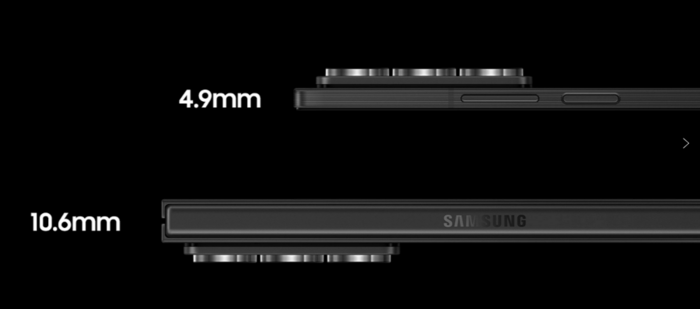
Samsung has filed a patent describing a concept for a “curved-edge” display. The initial illustration of this design note the slight curved-edge on its frame, which would (ideally) bend the display downward a touch. Moreover, the drawing in question seems to suggest a curved display for an Ultra-level phone as it shows an S Pen in its slot on the left corner. Another illustration then shows the internal component structure to support the stylus and its slot. Regarding durability, Samsung is potentially working on a stronger display that, when curved like this, is not so prone to damage. (Android Authority, Android Headlines, MSPoweruser, USPTO)

vivo reportedly plans to launch a smaller-display mid-range smartphone in 2025. The smartphone will feature a powerful Dimensity 9 series chip, a 6.31” display, and impressive camera capabilities. This model is speculated to be part of vivo’s S series, which is known for offering a blend of style and performance in the mid-range segment. This move aims to cater to users who prefer compact smartphones without sacrificing top-tier specs. (Gizmo China, GSM Arena, Weibo)
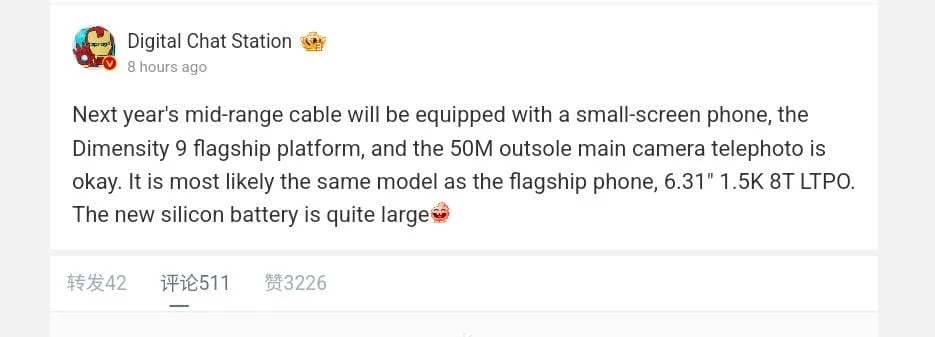

OPPO has introduced a new battery replacement plan, aimed at providing customers with a more affordable and reliable option for maintaining and using their devices for longer. The plan, announced by OPPO Service, offers a range of benefits including a battery replacement at only a CNY50 labour fee (~USD7), along with a 180-day official warranty. The new plan allows users to get their batteries replaced with original OPPO batteries, ensuring that the replacement parts meet the highest quality standards.(Gizmo China, OPPO)

Samsung allegedly to introduce the Qi2 wireless charging standard with the upcoming Galaxy S25 series. Samsung is expected to launch the trio of Galaxy S25 series: Galaxy S25, S25+, and S25 Ultra in Jan 2025. However, a report indicates Samsung will release a Qi2-compatible case for the Galaxy S25 series to go with the phones. (Neowin, Android Central, Twitter)

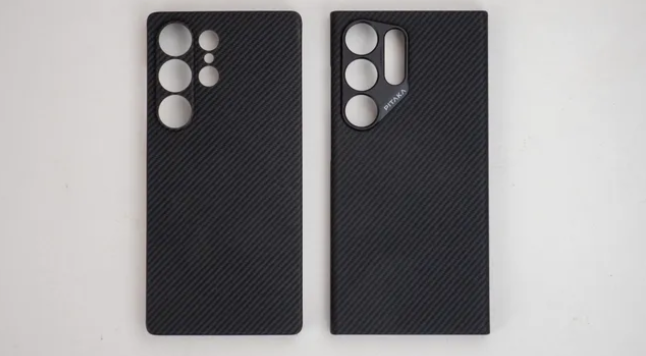

Apple introduced a Vehicle Motion Cues feature in iOS 18 to help iPhone and iPad users fight motion sickness (kinetosis). Google is working on a new feature called “Motion Cues” to help reduce motion sickness for smartphone users while traveling. The new Motion Cues feature will display animated dots along the edges of the screen. These dots will move in the same direction as the vehicle. For example, if user turns left, the dots will move right. Motion Cues will require user permission to show on the screen. Once turned on, the feature will overlay on top of apps and might even turn on automatically when the device detects that you are in a moving vehicle. Once available, Motion Cues will be a feature in Android’s settings.(Android Authority, Android Headlines)
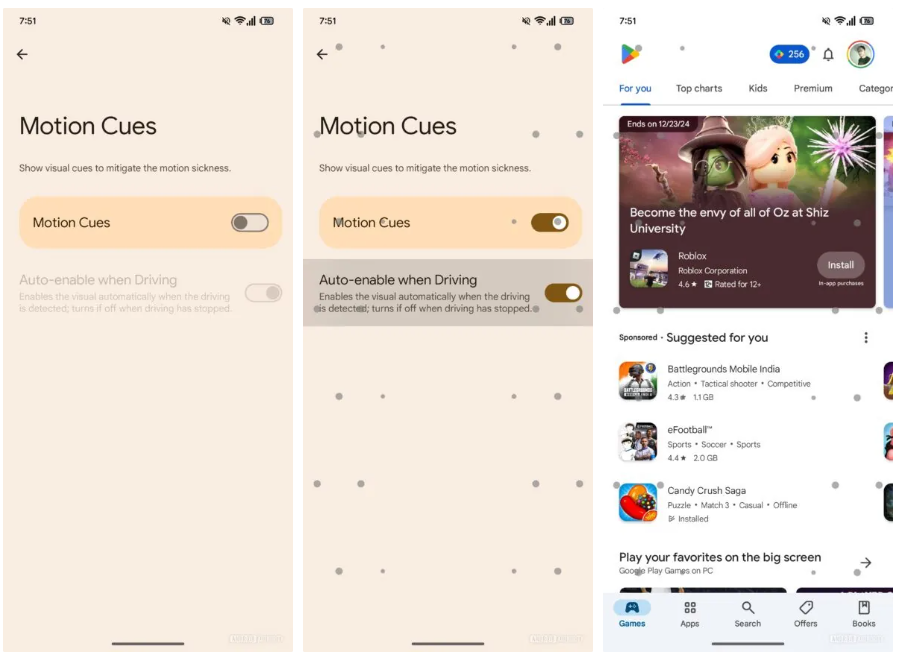

SoftBank CEO Masayoshi Son has announced a USD100B investment. This investment will be made over four years, promising to create at least 100,000 jobs. The investment and job creation will be primarily focused on artificial intelligence (AI) and related fields. The firm could invest through its Vision Fund, capital projects, or investments in chipmaking Arm Holdings. Some money could be the continuation of previously announced investments including the USD1.5B SoftBank injected into OpenAI.(Neowin, CNBC)


Apple has announced that it has invested more than GBP18B in the United Kingdom over the last 5 years, plus it has doubled the number of engineering teams in the country. Apple says that it supports 550,000 jobs in the UK through direct employment, its product supply chain, and the iOS app economy. Apple’s UK engineering teams work on Apple Intelligence, Private Cloud Compute, and silicon engineering.(MacRumors, Apple)

Samsung Electronics is reportedly planning to mass-produce 3M units of the “Galaxy Slim” model that emphasizes thinness. The Galaxy S25 series is scheduled to be released in 1Q25. As the foldable phones Galaxy Z Fold and Z Flip have traditionally been released in 3Q25, the Slim is expected to be sold starting in 2Q25. Samsung Electronics is interpreted to have taken a cautious approach as it applied a new design that had never been seen before. It is interpreted that Samsung is carefully trying to gauge market reaction as it is a product with a form factor that has never been released by Samsung or its competitors. (Neowin, ET News)

Samsung Electronics has set its smartphone production target at 229.4M units in 2025. This is 7-8M units less than the first planned quantity of 237M units announced in Oct 2024. The number of units produced in-house is 179.4M units, and the number of units produced through joint ventures (JDM) is 49.9M units. The 229.4M units is slightly more than Samsung Electronics’ expected smartphone shipments in 2024, which is 222M units. The foldable phone production is expected to end at 7M units in 2025.(Android Headlines, The Elec)

The U.S. International Trade Commission (ITC) said that smartphones made by Lenovo’s Motorola Mobility infringe patents owned by Ericsson, which could lead to a ban on U.S. imports of the phones if the decision is upheld. Ericsson filed its complaint with the Washington-based ITC in 2023, alleging that phones from Motorola’s Moto G, Edge and Razr lines infringe patents related to wireless communications. Lenovo denied the allegations. (Android Authority, Reuters, ITC)

Apple will begin producing its AirPods wireless earphones in India for the first time early 2025, marking a milestone in the iPhone maker’s steady push to diversify beyond China. A unit of supplier Foxconn Technology Group will allegedly start the assembly of AirPods at a new factory near Hyderabad in Telangana state around 1Q25. The factory is already making AirPods on a trial basis, and manufacturing will ramp up quickly after production begins.(MacRumors, Bloomberg, Digitimes)


Google has announced Android XR, which a new operating system designed specifically for what Google calls “extended reality” devices like headsets and glasses. Google will be bringing many of its apps like Maps, YouTube, Chrome, and Photos to the platform. It plans to support other Play Store apps as well. Google’s Gemini AI will be a centrepiece feature of Android XR, making the user experience more effortless. Android XR is in its early stages, but the company expects to ship Android XR-powered products sometime in 2025. In fact, Google and Samsung are already working on a headset codenamed Moohan, and it should be available in 2025.(Android Authority, Android Authority, The Verge, The Verge, GSM Arena, Wired)

According to Bloomberg’s Mark Gurman, Apple Vision Pro could gain support for Sony Playstation VR 2 controllers soon. Apple and Sony apparently planned to announce support for the controllers “weeks ago” but have pushed back the rollout. Under this rumored partnership, Apple would begin selling Sony’s controllers, which aren’t currently available on their own. Sony has apparently been working on adding the support for months, while Apple has asked third-party developers if they would take advantage of Sony’s VR controllers. (Bloomberg, Android Authority, The Verge)

By the end of 2024, Apple is believed to have sold around 500,000 units of Vision Pro. For context, that Wall Street estimate matches almost exactly the money Apple made from the iPhone in 2008, its first full calendar year of sales. (The Information, Apple Insider)


Back in 2023, Mercedes-Benz announced that it was improving the Mercedes-Benz User Experience System (MBUX) Voice Assistant’s “Hey Mercedes” feature with ChatGPT integration through the Azure OpenAI Service. It started testing this integration with a public beta program in the U.S. for over 900,000 vehicles equipped with the MBUX infotainment system. Today, Mercedes-Benz announced that the ChatGPT integration is now available as a free update to over 3M vehicles with the MBUX infotainment system. This new, enhanced voice experience will be offered in German, British English, and American English. (Neowin, Mercedes-Benz)


A new survey by Sellcell says many Apple iPhone and Samsung users are not impressed with AI on their phones. The survey included over 2,000 participants. Most users do not think it makes a difference. While AI continues to be a selling point for manufacturers, it seems most users do not see the value in it. The survey found that 73% of iPhone users and 87% of Samsung users think AI features on their phones add little to no value. Survey respondents were asked about various AI tools on their devices. While some users do use these features, they do not think AI has a big impact on their phones. When asked if they would pay for AI services, most said no. 86.5% of iPhone users and 94.5% of Samsung users said no to paying for additional AI services. However, 11.6% of iPhone users and 4% of Samsung users might pay for AI services. The survey found that many smartphone owners simply do not use AI features. Some said that they are not useful, others said they have not updated their phones to the latest software. AI accuracy and privacy concerns were also reasons to avoid the technology. In conclusion, while AI is being added to smartphones more and more, most users do not think it makes a big difference to their phone experience. iPhone users may care more about AI than Samsung users, but very few from either group want to pay extra or switch brands for better AI features. (Android Headlines, SellCell, blog)



